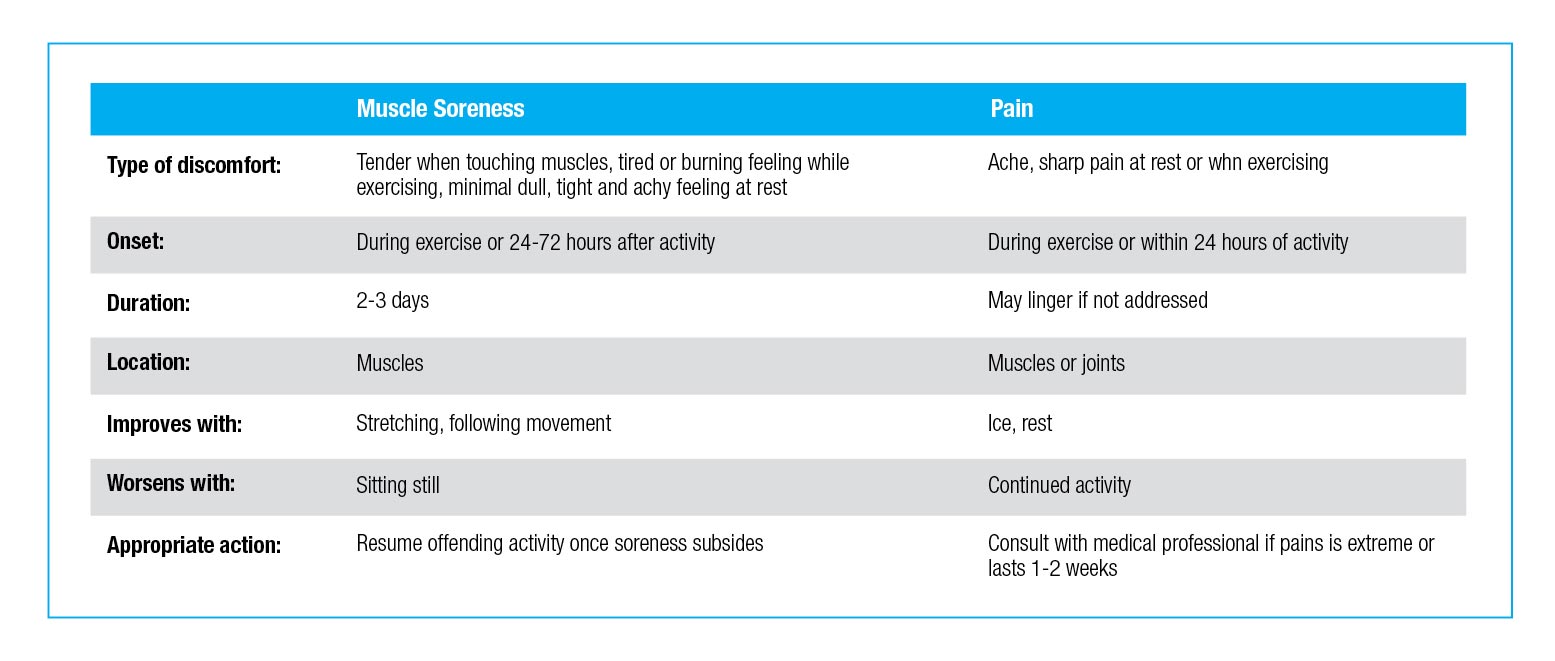By Dr. Frank Scerbo, PT, DPT, MS, CSCS
There are many benefits to exercise, including the potential for improved physical and mental wellbeing. However, there may also be some physical discomfort associated with these activities due to the stresses placed on the body.
When experiencing discomfort, it is important to understand the difference between exercise-related muscular soreness and pain. Muscular soreness is a healthy and expected result of exercise. Pain is an unhealthy and abnormal response. Experiencing pain may be indicative of injury.
Individual Activity Threshold
In order to make physical improvements, your body needs to be pushed to an appropriate level where gains can occur.
Each person’s body has a different activity threshold dependent upon many factors, including age, baseline strength, and participation level. Remaining on the safe side of your threshold will result in muscular soreness. Exceeding your threshold will result in pain.
Soreness vs. Pain: How To Tell the Difference
The chart below highlights key differences between muscle soreness and pain.
Muscle Soreness
After activity, muscular soreness typically peaks 24-72 hours after activity. This is the result of small, safe damage to muscle fibers and is called Delayed Onset Muscular Soreness (DOMS). During this time, your muscles may be tender to touch and feel tight and achy. Movement may initially be uncomfortable but moving and gently stretching your muscles will help to decrease soreness. During the few day period that you experiencing muscular soreness, you might consider performing alternate exercise activities in order to give your sore muscles an opportunity to recover while strengthening other muscles.
Pain
In contrast to muscular soreness, you may experience pain during or after performing exercise. This may feel sharp and be located in your muscles or joints. This pain may linger without fully going away, perhaps even after a period of rest. This may be indicative of an injury. Pushing through pain can result in injury. If you feel that your pain is extreme or is not resolving after 7-10 days you should consult with a medical professional. This person will diagnose your injury and direct you to the appropriate pathway of care.
How a Physical Therapist Can Help
A physical therapist can be a valuable resource to you throughout your exercise journey. Before beginning an exercise routine, your physical therapist can perform a variety of pre-activity assessments to determine your readiness for exercise. Based on this, your physical therapist may also recommend specific exercises that will best prepare you for your desired activities. They will also discuss the best strategies for introducing and progressing exercise activities while minimizing your chance of becoming injured.
In the unfortunate situation when exercise leads to an injury, your physical therapist will assist in your recovery in many ways. They will help with initial pain management, identify and address all factors that may have contributed to your injury to prevent further problems and provide specific recommendations regarding reintegration into exercise as appropriate.
Tip above courtesy of www.moveforwardpt.com
We are always available if you have any questions or need assistance. Call us at 201-941-2240 or visit us at www.scerbopt.com. You can also follow us on Facebook and Twitter.

